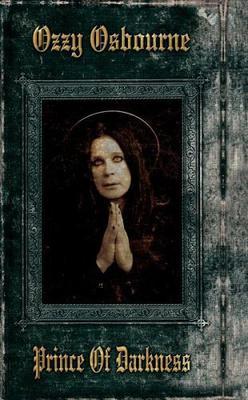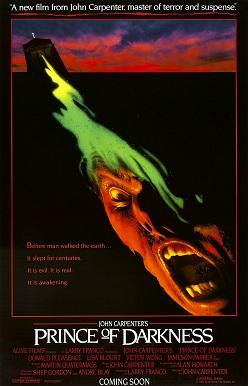The Enduring Allure of the Antihero in Popular Culture
The antihero has become a staple in narratives across various forms of media, captivating audiences with their complex motivations and moral ambiguities. Characters like Walter White from Breaking Bad and Dexter Morgan from Dexter challenge traditional notions of heroism, inviting viewers to explore darker facets of human nature.This fascination with the antihero can be attributed to several factors, including:
- Relatability: Antiheroes often reflect the struggles and imperfections of everyday life, allowing audiences to see parts of themselves in these flawed characters.
- Moral Complexity: They challenge the binary of good vs. evil, compelling audiences to question their own moral frameworks and the consequences of choices.
- Entertainment Value: The unpredictability of antiheroes creates tension and excitement, as viewers eagerly anticipate their next move in a morally gray world.
Moreover, the narrative arcs of antiheroes often culminate in dramatic consequences that mirror the chaos of real life, resonating with a generation that grapples with societal uncertainties. Whether itS the tortured soul of a vigilante or the ruthless machinations of a once-redeemed character, their journeys reflect a deeper societal yearning for authenticity. Such depth fuels our enduring fascination, as audiences are drawn not just to the narrative but to the existential questions these characters provoke. The antihero has become more than just a character trope; they embody the contradictions of modern existence,inviting us to sympathize with the devil we know all too well.

Exploring the Complex Narratives Surrounding the Prince of Darkness
The allure of the figure often referred to as the Prince of Darkness is deeply woven into the tapestry of human culture. From ancient folklore to modern media, this character embodies complexities that resonate on multiple levels. Many stories portray him not merely as evil incarnate but as a misunderstood anti-hero; a symbol reflecting humanity’s own internal struggles with morality, power, and redemption. This multifaceted portrayal cultivates a sense of intrigue as audiences are drawn to narratives that pose challenging questions about good and evil. When given depth, the Prince character becomes a mirror, prompting individuals to confront their own demons and the societal constructs that define right and wrong.
moreover, the enduring love for this enigmatic figure can be attributed to his resilience in popular culture, adapting to contemporary concerns while remaining rooted in tradition. The Prince of Darkness serves as an archetype in various forms-books,films,music,and even video games-inviting creators to reinterpret his story for every new generation. This adaptability is crucial; audiences are constantly searching for connections to their own struggles through the lens of fantasy. consequently, when the Prince emerges on screens or in pages, he often critiques the very systems that seek to contain him, thus igniting a sense of rebellion and fascination among followers. In essence, he remains a timeless figure because he embodies our own perpetual conflict between light and shadow, love and fear, compelling us to examine the narratives we choose to embrace.

from Literature to Cinema: The Evolution of Dark Figures
The transition of dark figures from the pages of classical literature to the shimmering screens of modern cinema represents a fascinating journey that mirrors societal fears and fascinations. Characters such as the brooding Byronic hero and the morally ambiguous anti-hero have captured audiences for centuries, evolving in response to the anxieties of their times.in the world of literature, these figures often grapple with profound existential dilemmas, embodying the tension between good and evil. The allegorical depth of characters like Dracula and Dorian gray laid the groundwork for their cinematic counterparts,who now possess the ability to evoke empathy while indulging in moral transgressions. Key themes include:
- Moral Ambiguity: Characters exhibit complex traits that challenge traditional notions of heroism.
- Societal Reflection: Dark figures frequently enough embody the fears and prejudices of their eras, serving as a mirror to the audience.
- Psychological Depth: The exploration of the human psyche has transformed these figures into symbols of inner turmoil.
As dark figures transitioned to the realm of film, they continued to evolve, adapting to the visual nature of storytelling. the 20th and 21st centuries brought new technology and narrative techniques that allowed filmmakers to explore the darker aspects of humanity more vividly. Lush cinematography and haunting scores amplify these characters’ allure, creating a palpable tension that draws viewers in. Iconic figures like Michael Myers and Heath Ledger’s joker have transcended their original narratives, becoming archetypes of complex villainy in contemporary culture.Critical aspects of their cinematic evolution include:
- Visual Storytelling: cinematography enhances mood and atmosphere, reinforcing the characters’ dark essence.
- Complex Backstories: Filmmakers often flesh out the origins of these figures, inviting viewer sympathy and understanding.
- Cultural Impact: The ongoing popularity of these characters reflects shifting societal themes, from fear of the unknown to commentary on mental health.
Redefining Good and Evil: Lessons from the Legend of the Prince of Darkness
The narrative surrounding the Prince of Darkness has often challenged the rigid dichotomy of good and evil. This legendary figure embodies the complexities of morality, revealing how the allure of the dark side often stems from a deep-seated desire for understanding and empowerment. The stories we tell about this character reflect not just fear, but fascination with the struggles against conventional morality. Themes such as rebellion,loss,and redemption frequently enough intermingle,prompting us to reconsider what it means to be truly good or evil. The Prince of Darkness transcends his role as an antagonist, emerging instead as a symbol of the human condition, one that resonates profoundly across cultures and epochs.
Throughout history, depictions of the Prince of Darkness have influenced countless cultural narratives, from literature to film. These portrayals resonate with audiences due to their exploration of the gray areas in human nature. Consider the following aspects that contribute to the enduring appeal of this archetype:
- Complex Characters: Characters embodying the Prince frequently enough possess a tragic backstory that elicits empathy.
- Subversion of Norms: The defiance of societal rules invites audiences to reflect on the moral constructs they may take for granted.
- Existential Questions: Such narratives provoke inquiries about free will, the nature of evil, and humanity’s struggle within dark contexts.
This intricate dance with darkness neither vilifies nor glorifies; rather, it invites introspection, making the Prince a timeless figure in our quest to understand the very fabric of morality.
